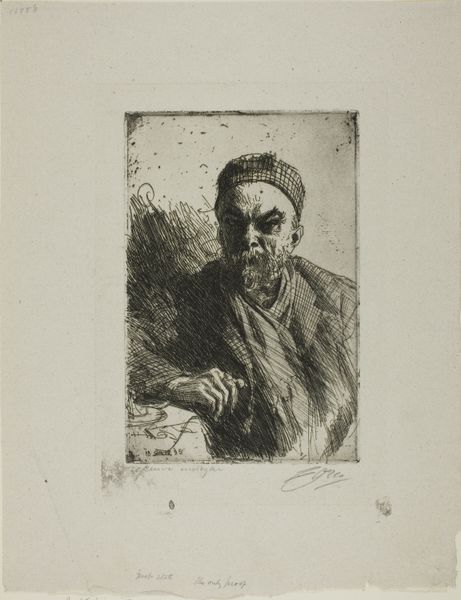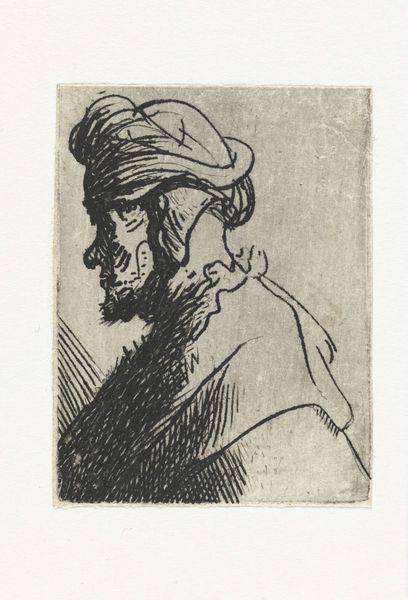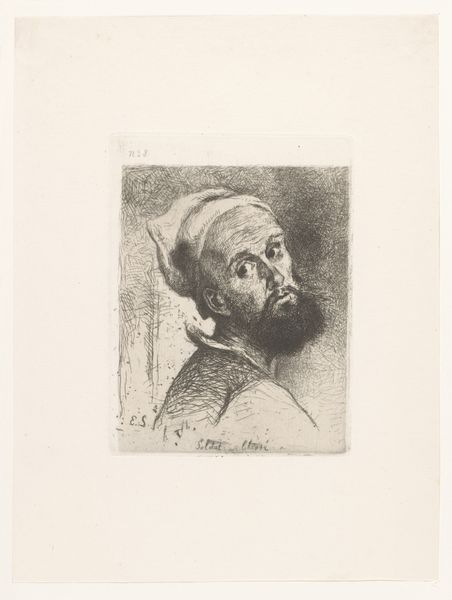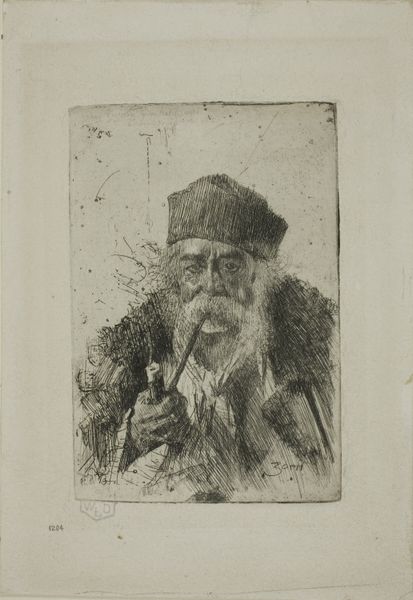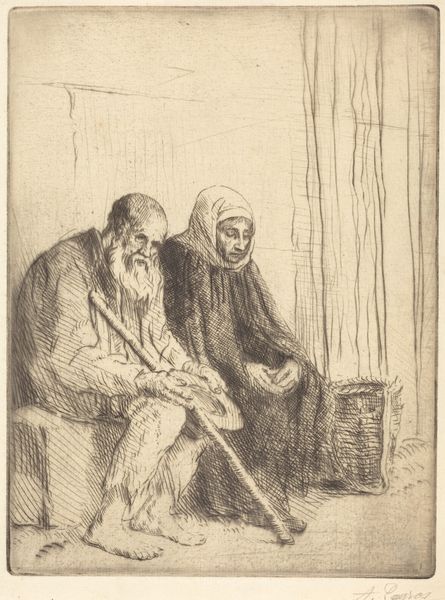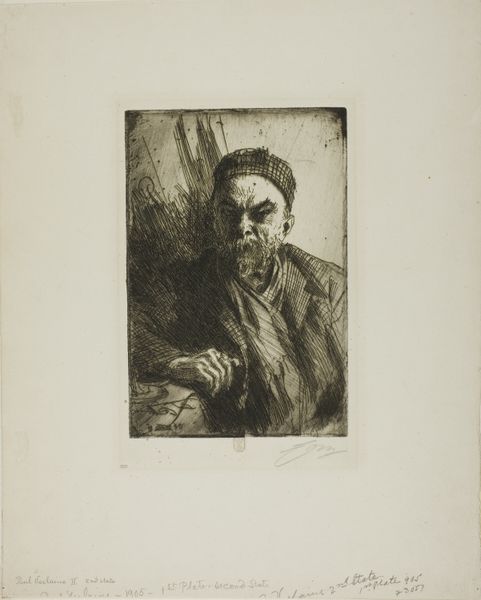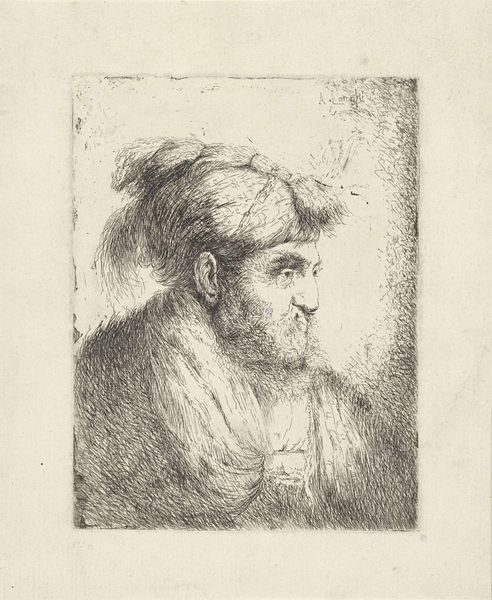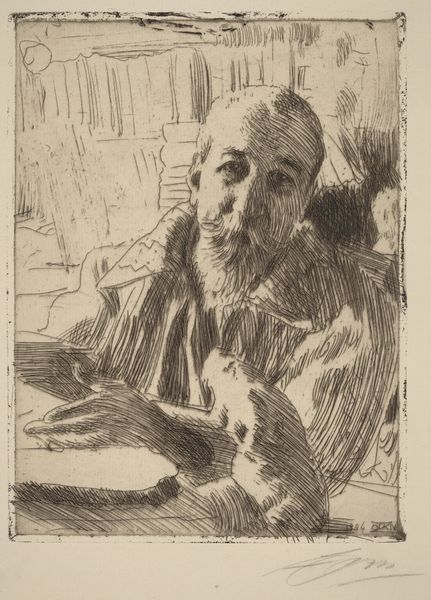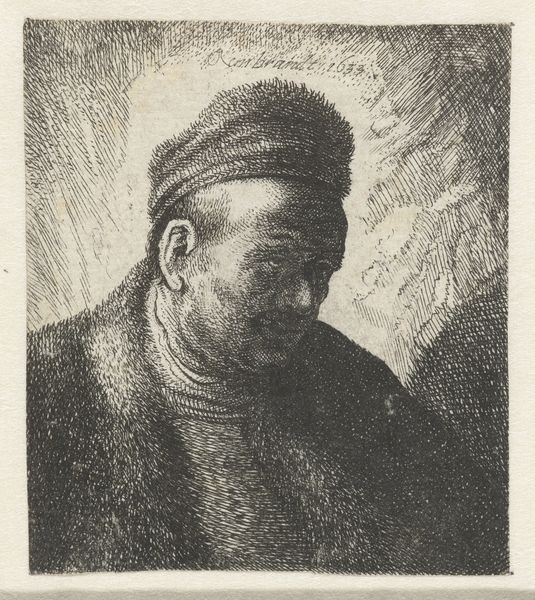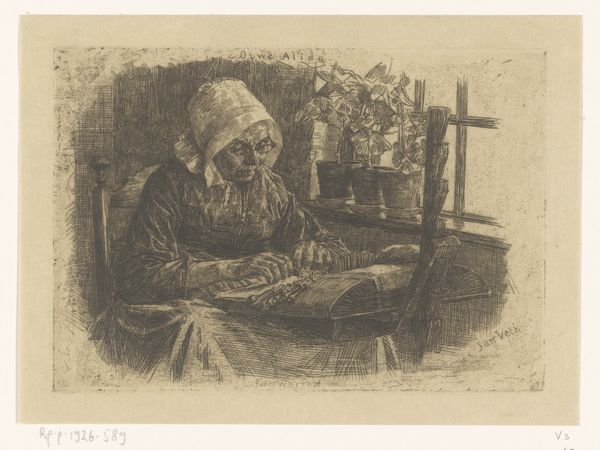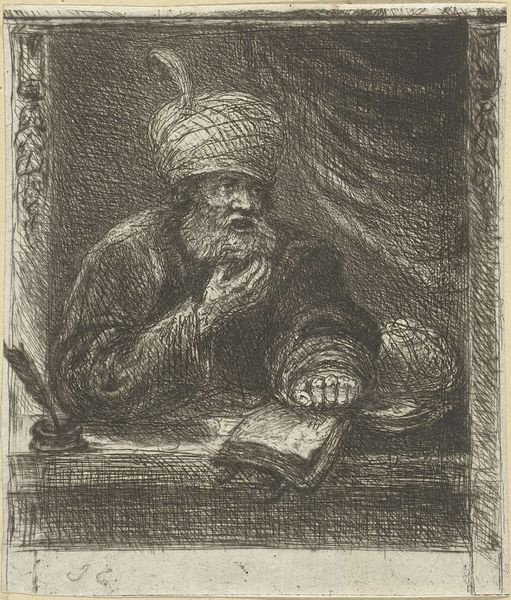
Dimensions: 239 × 158 mm (image/plate); 425 × 270 mm (sheet)
Copyright: Public Domain
Anders Zorn made this etching, Paul Verlaine I, using metal plate and etching ink. Look closely and you’ll see how Zorn has scratched the image of the French poet into the metal. The velvety blacks were created through an immersion in acid, a dangerous material, which would have bitten into the exposed lines. This is a painstaking, highly skilled process, and reveals the labor involved in its making. Etching has a fascinating social history. It’s a printmaking medium, ideally suited to creating multiples. This meant it was more accessible than painting or sculpture to a broader audience. But don’t assume that makes it somehow ‘lesser’. The beauty of etching lies in its intimacy. It invites close looking, rewarding those who take the time to appreciate the artist’s technique and the material qualities of the print. By attending to the materials and methods behind this seemingly simple image, we gain a richer understanding of both the artwork and the world in which it was created.
Comments
No comments
Be the first to comment and join the conversation on the ultimate creative platform.
